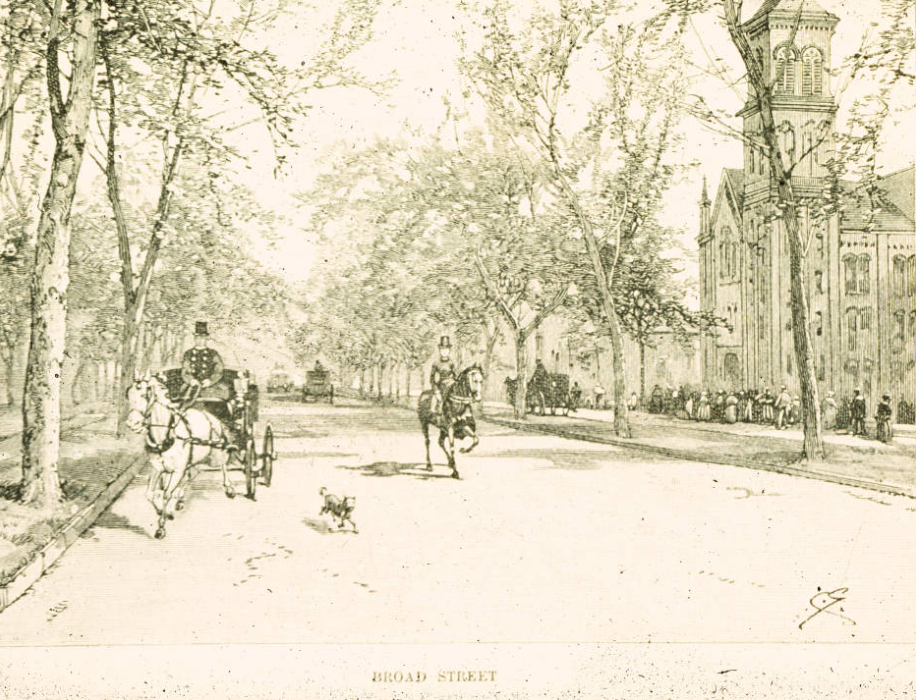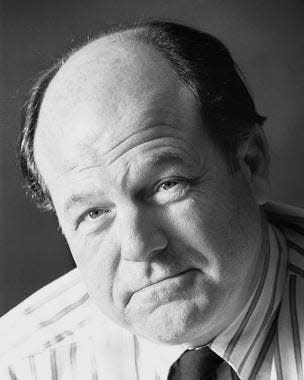East Broad was the 'Dream Street' for Columbus' movers and shakers by end of 19th century

It was the Victorian Dream Street. By the end of the 19th century, East Broad Street was the place to live for the rich and the powerful in Columbus — and those who wished to be either or both. It was the fashionable place to live for the people who had the wherewithal to build mansions that exhibited their success, and occasionally their good taste.
But it took a while for all of that to happen.
Columbus was created by the Ohio General Assembly to be the new capital city of the Buckeye State in 1812. The legislature and other state officials began meeting in the new village in 1816 at the conclusion of the War of 1812.
In the initial small village of several hundred people, most people lived along High Street from State House Square south to Town and Rich streets and in the streets and alleys nearby. With the growth of the town, people who had either good fortune or good luck began to move away from High Street and built houses of frame or stone along Front Street from Spring Street and its 30-foot-deep gully carrying a creek south to Mound Street, where another deep gully carried another creek.

People of property and standing enjoyed their homes with a Scioto River view and a chance to catch the westerly breezes that carried away the noise and odors of the village behind them. Or at least that was the case until 1831, when the Ohio Canal entered the city near what is now Bicentennial Park. At the same time, the National Road arrived along East Main Street, turned right on High, left on Broad and left town on a bridge to the west.
All of a sudden, a village of 2,000 people in 1831 became a city of 5,000 people by 1834. Many people living in their dream homes along the river now saw a rather nasty increase in traffic, noise and disruption. Until the 1840s it was perfectly legal to send one’s herd of pigs, sheep or cattle across the Broad Street bridge and through town to wherever the herd was heading.
A number of people decided it was time to move. And they did just that.
Main Street — formerly called Friend Street — was not the place to be. The National Road proved to be quite popular and was frequented night and day by a lot of noisy people.
Much more attractive was East Broad Street, which was, and still is, the road to beautiful, downtown Granville more than 10 miles away. In the early days, not all that many people were traveling to Granville, so the street carried less traffic and noise and odors that went with it.
People of means began building their dream homes along East Broad Street. Among them was Alfred Kelley, a lawyer, banker and state legislator who was often referred to as "the father of the Ohio Canal System" and "the father of the Ohio Banking System." In 1838, he took time from his work at the Statehouse to acquire several acres of swampy wetland east of Downtown. He proceeded to drain the wetland and build his home on the site. People at the time said he was living "way out in the country." He was four blocks from the Statehouse. Undaunted he built a Greek Revival mansion second only to the new Statehouse in size and grandeur.
He was not alone. Other families began to build their homes along the street in various spots where land was still relatively cheap. In those days, what is now Franklin Park was the garden space of a local agricultural society. The gardens eventually became the state fairgrounds, and after 1877 a city park. All of these developments attracted more people with the inclination and the income to build their mansions on East Broad Street as well. The riverfront houses were left behind and are all gone now.
All of this construction attracted the attention of William Graham Deshler. The son of local banker David Deshler, young William had visited Havana, Cuba, as a young man. He was greatly impressed by the tree-lined boulevards of that city.
Upon his return in 1857, he made the City of Columbus an offer. If they provided the land, he and his friends would provide the trees. They did and he did,and soon East Broad Street had four lines of trees marching east from Fourth Street. The pattern was two lines of traffic flanked by trees and two access lanes on each side with two lines of trees along the curb.
In short order and over the next several years, East Broad Street became a street of mansions. Many of them are still there, occupied now by public and private interests and are well worth a visit. The trees are gone. Many of them were elm trees and they died from Dutch elm disease. At the same time, an increase in traffic meant the removal of more trees.
In time, other neighborhoods became attractive to people of wealth and/or ambition. But East Broad Street remains — a reminder of who we once were and who we still are.
Ed Lentz is a local historian and author who writes this weekly "As It Were" column for The Dispatch.
This article originally appeared on The Columbus Dispatch: East Broad St was home to Columbus' wealthy by end of 19th century

